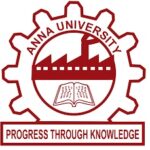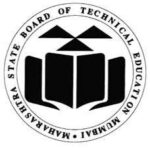
| University | Karunya Institute of Technology and Sciences |
| Department | Aerospace Engineering |
| Subject Name | Introduction To Aerospace Engineering |
| Subject Code | 18AE2001 |
| Semester | End Semester Exam April / May 2022 |
| Download | Question Bank/ Question Paper |
| Official Website | www.karunya.edu |
Karunya University Introduction To Aerospace Engineering Question Bank
Download Karunya Institute of Technology and Sciences Introduction To Aerospace Engineering [18AE2001] End Semester Exam April / May 2022 Question Bank/ Question Paper.
Download All Karunya University Aerospace Engineering Question Bank Here
Download Karunya University Introduction To Aerospace Engineering Question Bank
| Introduction To Aerospace Engineering End Semester April / May 2022 Question Bank | Download Here |
Karunya University Introduction To Aerospace Engineering Questions
Part-A:
1. Name 3 centres of ISRO.
2. Name the city in which Gas Turbine Research Establishment (GTRE) is located.
3. State the four forces acting on an airplane.
4. Explain the difference between centre of pressure and aerodynamic centre.
5. State three wing positions in an airplane.
6. State three wing shapes in an airplane.
7. List the engines that power most the flying machines.
8. An aircraft piston engine, also commonly referred to as a reciprocating engine, is an internal combustion engine that uses one or more reciprocating pistons to convert ______ into a rotational motion.
9. If weight (newton) is used, then specific impulse has units of ____.
10. Specific impulse of cryogenic propellants is _____ than liquid propellants.
Part-B:
11. Explain the functions of horizontal and vertical stabilizers in an airplane.
12. A sample of gas occupies 12 L under a pressure of 1.2 atm. Calculate its volume if the pressure increases to 3.6 atm. Temperature is assumed constant.
13. State different types of landing gears in an airplane.
14. Explain the working principle of jet propulsion.
15. Explain briefly PSLV launch vehicle.
16. Write three Kepler’s laws of motion.
Part-C:
17. a. Describe the functions of slats, spoiler, aileron and rudder in an airplane.
b. State the values of density, pressure and temperature at sea level of the standard atmosphere.
c. State the five important layers of the upper atmosphere with increase in altitude.
d. Calculate the value of air temperature at 11 km altitude.
18. a. With the help of neat figure of an airfoil, explain the different terms used in it.
b. A 100 cm meter rule is pivoted at its middle point (at 50 cm point). If weight of 2 N is hanged from the 20 cm point, Calculate the amount of weight required to be applied at the 80 cm mark to keep it in a balanced position.
c. Explain NACA2421.
19. a. Explain the terms ‘dead load’ and ‘live load’ used in an aircraft.
b. State the five major units of the airframe of a fixed-wing aircraft.
c. Describe briefly the wing construction of a fixed wing aircraft.
d. List some of the materials used in an aircraft.
20. a. Explain briefly ramjet engines, turboprop engines and turbofan engines.
21. a. From the first principles, derive the rocket equation
Vb = g0 Isp ln(Mi/Mf),
Where Vb is the burnout velocity, g0 is the acceleration due to gravity at sea level, Isp is specific impulse and Mi/Mf is the mass ratio.
b. If the Isp of a rocket using liquid hydrogen and oxygen as fuel and oxidizer is 430 s, and Vb is 10000 metres/s, calculate its mass ratio (g0= 9.8 m/s2).
22. a. Calculate the values of pressure, density and temperature for the standard atmosphere at an altitude of 14km.
23. a. A two-stage rocket has the following design characteristics.
First stage: propellant mass = 30000 kg, structural mass = 12000 kg. Second stage: propellant mass = 15000 kg, structural mass = 4500 kg. The pay load mass is 100 kg. The specific impulse for first stage is 300 s and for the second stage is 400 s. Calculate the final burnout velocity (g0=9.8 m/s2).
b. The burnout velocity Vb of a single stage rocket is 9800 m/s. Its mass ratio (Mi/Mf)is 9. Find the specific impulse Isp of the rocket (g0=9.8 m/s2).
Compulsory:
24. a. The asteroid belt is the region of the Solar System located roughly between the orbits of the planets ____ and _____.
b. The observed average separation of Pluto from Sun is 39.44 astronomical units. From Kepler’s 3rd Law, find the orbital period of Pluto.
c. Find the orbital period of an Earth satellite if its semi-major axis (a) is 8000 km. Earth’s gravitational constant (µ) is 398600 km3/s2.
d. Using Keplerꞌs equation M = E – e sin E, calculate the mean anomaly M in degrees if the eccentric anomaly E and eccentricity e are 30 degrees and 0.15, respectively
Have a question? Please feel free to reach out by leaving a comment below
![Karunya [14AE2030] Basics of Aerospace Engineering Question Bank 2022 Karunya-Logo](https://www.recruitmentzones.in/wp-content/uploads/2022/09/Karunya-Logo-150x150.jpg)



